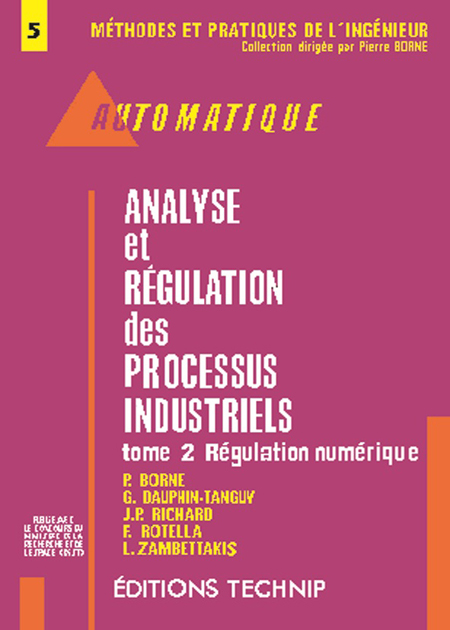Analyse et régulation des processus industriels. Tome 2 Régulation numérique
Authors : BORNE Pierre , DAUPHIN-TANGUY Geneviève , RICHARD Jean-Pierre , ROTELLA Frédéric , ZAMBETTAKIS Irène
ISBN : 9782710806431
trade paperback 16 x 24 cm 320 pages
Publication date : 1993
 Add to cart 59 $ (54 €)
Add to cart 59 $ (54 €)
Le tome 2, conçu selon un plan analogue, présente les méthodes nécessaires à l’implémentation de commandes numériques.
Contents :
1. Introduction à la commande numérique. 2. Signaux échantillonnés. 3. Fonction de transfert en z. 4. Caractérisation fréquentielle et temporelle des systèmes échantillonnés. 5. Représentation des systèmes échantillonnés dans l’espace d’état. 6. Signaux aléatoires discrets. 7. Stabilité des systèmes linéaires échantillonnés. 8. Précision des systèmes asservis échantillonnés. 9. Observabilité et commandabilité. 10. Principe de la régulation numérique. 11. Synthèse des systèmes échantillonnés en utilisant les méthodes du continu. 12. Régulation par PID numérique. 13. Analyse et synthèse sur le lieu d’Evans. 14. Régulation dans l’espace d’état. 15. Régulateurs numériques RST. 16. Commande adaptative. 17. Commande prédictive. 18. Stabilité des systèmes discrets non linéaires. 19. Eléments d’identification paramétrique. Bibliographie. Index.
 0
0

 Newsletter registration
Newsletter registration


 Partager
Partager
 Tweeter
Tweeter
